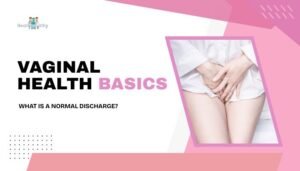Preeclampsia Signs: What Pregnant Women Need to Watch For
Introduction Preeclampsia is a pregnancy complication typically arising after 20 weeks of gestation, marked by high blood pressure and, in many cases, protein in the urine. Though its exact cause remains somewhat unclear, preeclampsia can affect various organs and endanger...
Read MoreMenstrual Migraine: Why Do Some Women Get Headaches with Their Period?
Introduction Many women experience migraines that coincide with their menstrual cycle—often referred to as menstrual migraines. This recurring headache pattern is linked to the hormonal changes surrounding menstruation, particularly the drop in estrogen that occurs before a period. Though migraines...
Read MorePeriod Poverty: How Lack of Menstrual Products Impacts Women’s Health
Introduction Menstruation is a normal biological process, yet many girls and women worldwide face period poverty—the inability to afford or access adequate menstrual products. This gap not only compromises hygiene and comfort but also impacts emotional well-being, work, and educational...
Read MoreThe Menstrual Cup Revolution: Eco-Friendly Period Options
Introduction Menstrual cups have emerged as a game-changer for period care—offering a reusable, planet-friendly alternative to single-use pads and tampons. Whether you’re prioritizing sustainability, cost-effectiveness, or comfort, cups can provide a practical solution for managing menstrual flow. Still, many first-timers...
Read MorePelvic Inflammatory Disease: Causes, Warning Signs, and Treatment
Introduction Pelvic Inflammatory Disease (PID) is an infection of the female reproductive organs, typically involving the uterus, fallopian tubes, and ovaries. It often develops from sexually transmitted infections (STIs) like chlamydia or gonorrhea but can also arise from other infections....
Read MoreVaginal Health Basics: What Is a Normal Discharge?
Introduction Vaginal discharge can tell you a lot about your reproductive health, but it often causes unnecessary worry if you’re unsure what to expect. In reality, normal discharge varies in texture and amount depending on hormone levels, sexual activity, and...
Read MoreBacterial Vaginosis: Understanding and Preventing This Common Infection
Introduction Bacterial vaginosis (BV) is the most common vaginal infection in women of reproductive age. Characterized by a disruption in the normal balance of vaginal bacteria, it can cause bothersome symptoms such as unusual discharge or odor. Many women, however,...
Read MoreYeast Infection Myths: What Really Causes Them and How to Prevent
Introduction Yeast infections—most commonly caused by the fungus Candida albicans—are a frequent nuisance many women face. Although not typically dangerous, they can create plenty of discomfort: itching, burning, and irritation. Yet, there’s a lot of misinformation circulating about what triggers...
Read MoreUTIs and Women: Prevention Tips for Recurring Infections
Introduction Urinary tract infections (UTIs) are common among women—more so than men—due to the female anatomy and other biological factors. While most UTIs are treatable with antibiotics, the discomfort, pain, and frequent recurrences can disrupt daily life. For some women,...
Read MorePap Smear vs. HPV Test: What’s the Best Way to Screen for Cervical Cancer?
Introduction Cervical cancer was once a leading cause of cancer death in women, but widespread screening has significantly reduced its impact. Two primary screening tools exist today: the Pap smear (or Pap test), which checks for abnormal cell changes on...
Read More









